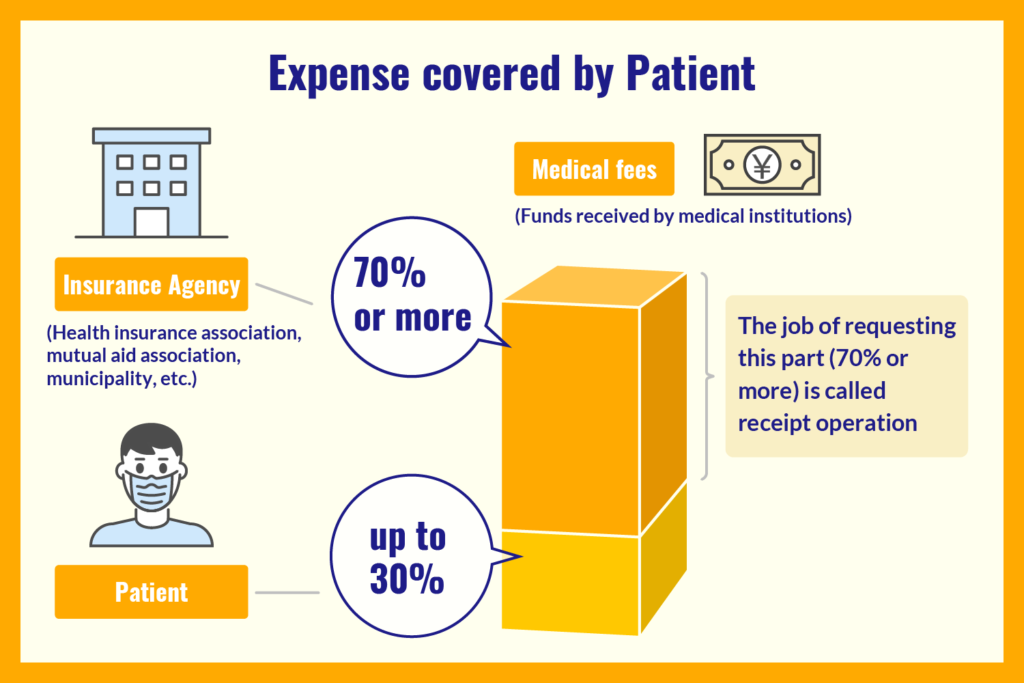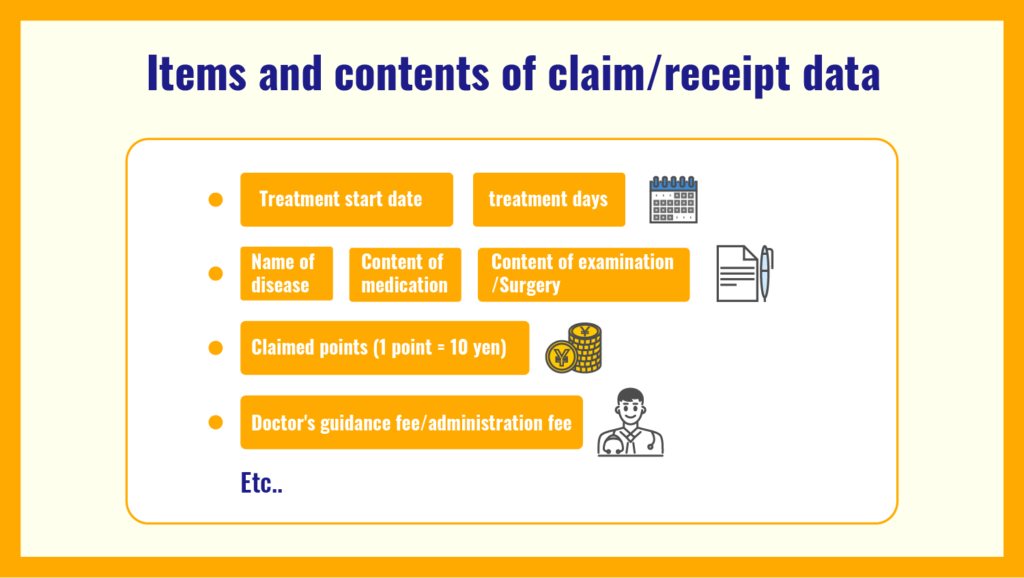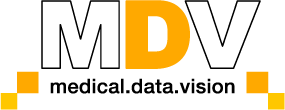What is Receipt Data? An Easy-to-understand introduction covering from items / receipt operations to analysis / utilization methods
It may be difficult for people who are not usually involved with receipt data to understand its specific meaning and how to handle such data, but reading this article should provide a large overview of the concept.
In this article, we will review:
- Meaning of receipt data
- Receipt data items
- Receipt business flow
- Earnings structure of the medical industry
- How to analyze and utilize claim data
Each aspect will be discussed in detail.
By reading this article, you will not only understand the receipt data, but also know how to use it in your organization. Knowing the ABC of receipt data is essential to grasp the trend of big data applications in healthcare.
What is Receipt Data (= Medical Fee Statement)
First, let’s examine the definition of the receipt data. It mainly refers to “medical fee statements” issued by medical institutions that have covered insurance.
There are two types of medical care at medical institutions:
- Medical treatment covered by health insurance: Public medical treatment covered by health insurance
- Private medical treatment: Medical treatment not covered by insurance (such as cosmetic medicine, AGA treatment, etc.)
At medical institutions covered by health insurance, patients pay medical expenses based on the “medical points” that vary depending on the disease and treatment.
Except for low-income earners, young children, and seniors, patients are basically covered by insurance assuming a 30% co-payment from the patient’s side.
Therefore, the remaining 70% will be billed monthly by the medical institution to the “insurance institution (health insurance association, mutual aid association, municipality, etc.)” that the patient is a member of.
At this time, “receipt data (medical fee statement)” is issued.

Receipt data is divided into the following four types.
- Hospitalization: Hospital inpatient information
- Outpatient: Information on people who visit hospitals and clinics
- Dentistry: patient information for dental clinics
- Dispensing: information of the person who received the medicine at the dispensing pharmacy
“Hospital”, “Outpatient”, and “Dental” contain patient medical data, and “Dispensing” contains data on pharmaceuticals (medicine) prescribed for each patient.
*For those who want to know the difference between “receipt data” and “DPC data,” which are often confused, please click What is DPC data? Please also consult the explanation of how to use DPC data, the analysis method, and the difference from the receipt data.
Receipt data creation flow (Receipt operations)
The work of claiming medical fees at the relevant medical institution is called “receipt work”, and the receipt data for the previous month is created and submitted by the 10th of each month.
Many medical institutions have introduced “receipt computer” software that efficiently creates medical receipts, and data such as medical treatment details and disease names are entered into the computer during daily medical care. The data is mainly entered by medical clerical staff.
Currently, most of the submission of the created claim data is completed online. Before that, sending CD-ROMs was the mainstream. Medical clerical work will be very busy at the beginning of the month because they will be working on confirmation and billing for one month’s worth of receipt data. Receipt data should be submitted to the “examination and payment agency”, not the health insurance association or other insurance institution.
Data is passed on to the insurance agency that actually pays for medical care via the review payer. The reason for placing a screening and payment organization between the medical institution and the insurance institution is to calculate medical expenses as accurately and precisely as possible.

Some medical institutions calculate medical treatment points that cannot be applied for, and if an incorrect number of points is submitted, the claim data may be returned to the medical institution by the examination and payment agemcy.
For this reason, carefulness is required in receipt work, and double checks are essential in medical office work.
Content clearly appears as described in the items included in the claim data; There are two main parts in the receipt data:
- Contents of “diagnosis, examination, and treatment” for each patient
- Earnings of each medical institution

At the start of the patient’s treatment period it is possible to see what kind of disease is treated, which medicine was prescribed, and what kind of examinations and surgeries the patient underwent.
In addition, the medical fee can be calculated with 1 claim point = 10 yen, so you can grasp how much profit each medical institution is making.
Depending on the disease and treatment, the doctor’s guidance fee and management fee are also added, and you can also grasp the breakdown for each item.
On the other hand, since only superficial information about prescriptions and surgeries can be obtained from receipt data, it is not possible to grasp the following “processes”:
- Details of test results
- Patient condition and background before surgery
- Background of prescribing drugs
How to analyze and use claim data
Finally, we will explain “how to analyze and use receipt data” based on the examples of each institution involved in the process. For example, when a health insurance society uses receipt data, they would focus on:
- Prevalence of specific drugs by region
- Percentage of out-of-hours consultations by region
- Relationships between multiple diseases such as A and B
By using such data, it is possible to consider preventive measures against specific diseases.
In the case of a “pharmaceutical company,”
- Proportion of specific diseases by region
- Prescription rate for each drug
The analysis will help determine future sales strategies and new drug development policies.
If you are a “consulting company targeting medical institutions”, by checking the medical fee in the receipt data, you would gain insight on:
- Trends of competing medical institutions in the region
- Understanding diseases that account for a large proportion of medical fees
- Differentiation from competing medical institutions
It will lead to advice on hospital management policy based on such data.
In the case of “administrative agencies,” medical receipt data is used in discussions such as “revision of medical fees”. Medical policy is discussed based on data, and specific measures are decided, so medical insurance claim data will continue to be used in the future.
Please use our company when analyzing and utilizing receipt data. Our Medical Data Vision (MDV) solutions provide
- A tool that dramatically improves the efficiency of medical database analysis
- Investigative analysis of specific medical data
MDV provide services to companies, including the medical equipment and pharmaceutical industries, the life insurance industry, and also support academia research. MDV provide a hospital medical database combining “receipt data + DPC data” mainly for companies and academic research institutions.
The scope of the medical database as of the end of June 2022 is
- Hospital data: 40.16 million people from 465 facilities
- Health insurance societies data: 7.8 million people from 147 health insurance companies
MDV is proud to operate the largest medical database in Japan, and we can provide analysis and data matching the queries of the client company. There are many examples of using our company, so if you are considering using medical big data for your business, please contact us.
For More Information, Please Contact Us Here
About Japanese Healthcare System

What you need to know about the healthcare system in Japan before using the data.
SERVICE

In addition to various web tools that allow you to easily conduct surveys via a browser using our medical database, we offer data provision services categorized into four types to meet your needs and challenges: "Analysis reports" "Datasets," "All Therapeutic Areas Data Provision Service," and "Specific Therapeutic Areas Data Provision Service.

© Medical Data Vision Co., Ltd. All Rights Reserved.





